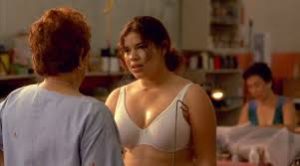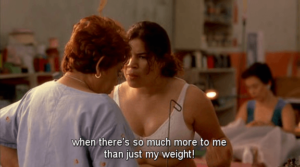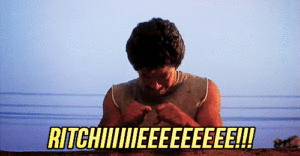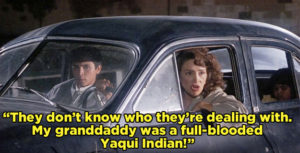After watching the movie La Bamba, I realized that there are many similarities, as well as many connections, between the movie and the readings for this class. There are many prime examples and issues that are expressed throughout the movie. One classic example is that of machismo, which is thoroughly expressed in the poem “Machisimo Is Part of Our Culture” by Marcela Christine Lucero-Trujillo. Richie’s brother, Bob, epitomizes this throughout the entire film. There is also a sense of pride expressed by Richie during the movie. In the film, he expresses his desire to sing the Mexican folk song La Bamba, and use it as his next hit. There is also the example that family is an extremely important part of Chicano culture. This idea is discussed in Chapter 1 of the book, Next of Kin by Richard Rodriguez.
Throughout the film, Richie’s brother, Bob, is a perfect example of an individual who is “macho” and a patriarch. It is implied in the movie through subtle clues that Bob views women as nothing more than objects and sexual conquests. Bob is not sympathetic towards his girl friend (who Richie initially had a crush on and was initially dating). This is even the case when his girl friend, Rosie, gets pregnant. Bob is never home, is usually out drinking, and is verbally and sexually abusive towards Rosie. At one point in the movie, Bob even admits that he almost has to rape her in order for her to have sex with him. This is a prime example of machismo. In the book Next of Kin by Rodriguez, he quotes sociologist Alma M. Garcia’s Chicana Feminist Thought: The Basic Historical Writings as comparing Chicano machismo to a form of sexism. Also included in his quote of her writings is sociologist Garcia attributing the formation of Chicana feminism to machismo, and even referring to machismo as “contributing significantly” to its formation.
When Richie suggests to Del-Fi Record’s owner Bob Keane that he would like to use the Mexican folk song La Bamba as his next song, Bob refuses and is skeptical of how it will be received by the American Rock n Roll fans. Richie is adamant that he wants to sing the song in Spanish, as he is extremely proud of his Mexican heritage, even despite the fact that he does not speak Spanish. In “El Plan De Aztlan”, the essay calls for the people of Aztlan to be conscious and proud of their historical heritage. In El Plan De Aztlan, it is stated that it is imperative that we do this in order to become successful and free ourselves of the “gabacho”.
Lastly, the importance of the family is obvious throughout the movie, La Bamba. Richie expresses many times in the movie his desire to be able to buy his mother a nice, beautiful home. That is his primary and ultimate goal. Another great example of how family is of the utmost importance is how close Richie and Bob are, even despite their differences, arguments, Bob’s jealousy of Richie’s success, and even Bob stealing Rosie from Richie. In the introduction section of the book Next of Kin by Rodriguez, there is a quote from Cherrie Moraga which states “The family is the place where, for better or worse, we learn how to love”. I believe that quote alone describes the ideology of family, especially a Chicano family. Another great quote is in Chapter 1 of the book, which is by Jose Armas, and states “It is impossible to understand the Chicano without understanding the importance of family”. Those two quotes alone speak volumes as to how important family is to Chicanos.






